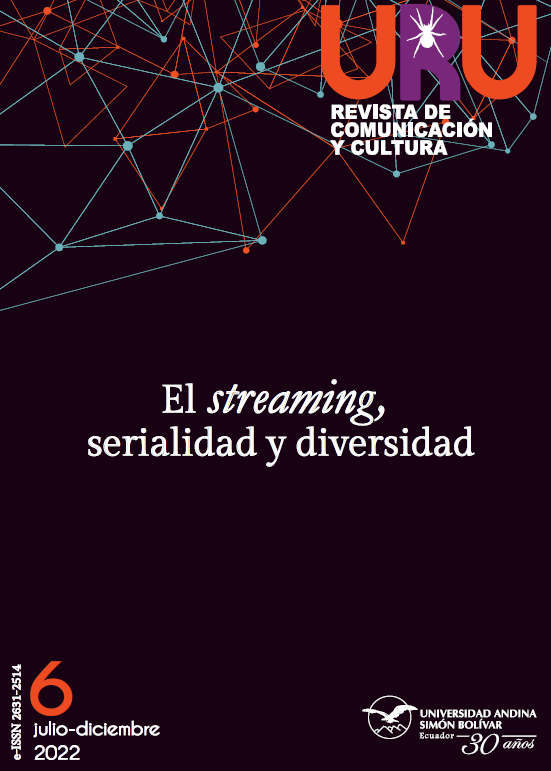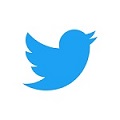Language, Reality and Images through Denis Villeneuve’s Arrival
DOI:
https://doi.org/10.32719/26312514.2022.6.8Keywords:
Semiotics, virtual studies, psychoanalytic theory, science fiction, cinemaAbstract
This article explores the specific conditions for reading and interpreting images and the semiotic experience derived from them, in contrast to how we learn to read and interpret written language. For this purpose, the science fiction film Arrival by Denis Villeneuve has been selected as a fundamental reference, considering that this film addresses a theoretical and philosophical problem about language: the limits of human thought related to the written language and the possibility of an exteriority of it, marked by a fictional, entirely visual language structured by images. For this purpose, a dialogue has been developed between two fundamental authors: Jacques Lacan’s psychoanalytic theory about the three registers (Imaginary, Symbolic and Real) and the theoretical foundations of Roland Barthes’ semiotics. This dialogue finally takes form in the results of the semiotic analysis of a set of shots from the previously mentioned film, selected for their relevance in the discussion. In this process, in addition to investigating the bonds between language and time, a critique has been developed on two main ideas: the homologation of the conditions of reading images with those of the written language that try to deny to the images their own linguistic nature; and the assumption that images constitute a more transparent way of accessing the truth, for a subject that is itself a product of language ambiguity.
Downloads
References
Bal, Mieke. 2016. Tiempos trastornados: Análisis, historias y políticas de la mirada. Madrid: Akal.
Barthes, Roland. 2002. Lo obvio y lo obtuso: Imágenes, gestos, voces. Barcelona: Paidós.
Bergson, Henri. 2006. Materia y memoria: Ensayo sobre la relación del cuerpo con el espíritu. Buenos Aires: Cactus.
Brown, Roger. 1976. “In Memorial Tribute to Eric Lenneberg”. Cognition 4: 125-53. DOI: https://doi.org/10.1016/0010-0277(76)90001-9
Bruzos, Alberto. 2001. “¿Un mundo en la cabeza? Historia y alcance del relativismo lingüístico”. Contextos 19-20 (37-40): 144-83.
Coon, Jessica. 2020. “The Linguistics of Arrival: Heptapods, Field Linguistics and Universal Grammar”. En Language Invention in Linguistic Pedagogy, editado por Jeffrey Punske, Nathan Sanders y Amy Fountain, 32-48. Oxford, UK: Oxford University Press. DOI: https://doi.org/10.1093/oso/9780198829874.003.0004
De la Maza, Luis Mariano. 2019. “Hegel en Lacan: Las trampas de lo imaginario y la función del lenguaje en la constitución del sujeto”. Veritas 43: 29-47. http://doi.org/10.4067/S0718-92732019000200029. DOI: https://doi.org/10.4067/S0718-92732019000200029
Debray, Régis. 2010. Vida y muerte de la imagen: Historia de la mirada en Occidente. Barcelona: Paidós.
Deleuze, Gilles. 1987. Estudios sobre cine 2. La imagen tiempo. Barcelona: Paidós.
Deleuze, Gilles. 1994. Estudios sobre cine 1. La imagen movimiento. Barcelona: Paidós.
Escala, Alberto. 2012. “Relativismo lingüístico, relativismo ontológico”. Nóesis. Revista de Ciencias Sociales y Humanidades 21 (42): 61-85. DOI: https://doi.org/10.20983/noesis.2012.2.3
Haug, Wolfgang. 2007. “Philosophizing with Marx, Gramsci, and Brecht”. Boundary 2 34 (3): 143-60. http://doi.org/10.1215/01903659-2007-019. DOI: https://doi.org/10.1215/01903659-2007-019
Jay, Martin. 2007a. Ojos abatidos: La denigración de la visión en el pensamiento francés del siglo XX. Madrid: Akal.
Jay, Martin. 2007b. “¿Parresía visual? Foucault y la verdad de la mirada”. Estudios Visuales 4: 7-22.
Lacan, Jacques. 1999. Los cuatro conceptos fundamentales del psicoanálisis. Buenos Aires: Paidós.
Lacan, Jacques. 2010. De los nombres del padre. Buenos Aires: Paidós.
Mirzoeff, Nicholas. 2016. Cómo ver el mundo: Una nueva introducción a la cultura visual. Barcelona: Paidós.
Mitchell, William. 2014. ¿Qué quieren realmente las imágenes? Ciudad de México: COCOM.
Perniola, Mario. 2006. Contra la comunicación. Buenos Aires: Amorrortu.
Rancière, Jacques. 2005. La fábula cinematográfica: Reflexiones sobre la ficción en el cine. Barcelona: Paidós.
Rancière, Jacques. 2010. El espectador emancipado. Buenos Aires: Manantial.
Rodríguez, Deborah. 2019. “Metáforas para entender el mundo: Estudio de ‘Metáforas de la vida cotidiana’, de G. Lakoff y M. Johnson, con motivo de la película ‘Arrival’, de D. Villeneuve.” Pensamiento al Margen 55: 201-13.
Villeneuve, Denis. 2016. Arrival. Estados Unidos: Sony / Paramount Pictures.
Whorf, Benjamin. 1971. Lenguaje, pensamiento y realidad: Selección de escritos. Barcelona: Barral Editores.
Downloads
Published
How to Cite
Issue
Section
License

This work is licensed under a Creative Commons Attribution-NonCommercial-ShareAlike 4.0 International License.
ASSIGNMENT OF RIGHTS, DECLARATION OF CONFLICT OF INTEREST AND DISSEMINATION
The authors who publish in this journal accept the following conditions:
- Authors retain copyright and grant the journal the right of first publication, with the work registered under the Creative Commons Attribution-NonCommercial-ShareAlike 4.0 License, which allows sharing, adapting and attributing the work (see: Open Access Policies).
- Authors can make other independent and additional contractual agreements for the distribution of the article published in this journal (e.g., include it in an institutional repository or publish it in a book) as long as they expressly indicate that the article was published for the first time in Uru: Revista de Comunicación y Cultura. In the case of reproduction, a note similar to the following must be included: This text was originally published in the journal Uru: Revista de Comunicación y Cultura N ° -, year of publication.
- Authors are encouraged to publish their work on the Internet (e.g. on institutional or personal pages) in the final version published by Uru: Revista de Comunicaicón y Cultura as it may lead to a wider and faster dissemination of the published work.








